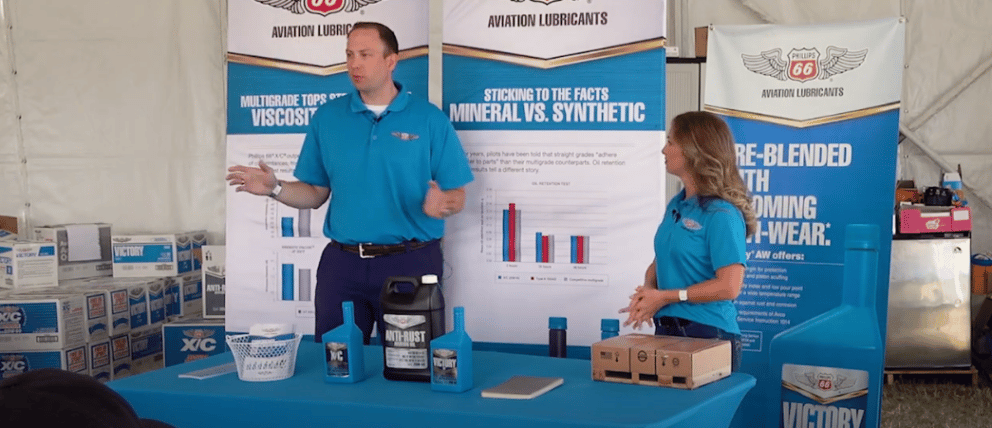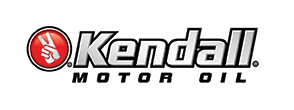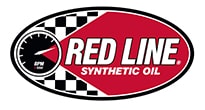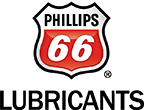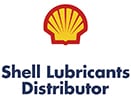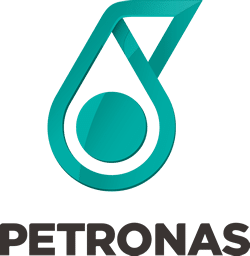Transcript
Speaker 1:
Can you start to dive into synthetic vs. mineral because I feel like I get that question all the time? Talking about how mineral, if you’re not flying a lot, it can be better to have that for the boundary layer that will stick to the walls or synthetic and kind of clear up some of the misinformation that you find with the data in relation to that.
Speaker 2:
So first and foremost for Phillips 66, as long as there’s leaded fuel, we will not introduce a synthetic blend or a full synthetic aviation engine oil. It’s great for cars, it’s great for trucks but those burn different types of fuels than we do in our aircraft so you have to think a little bit. I like food, I like to eat so for me I got to think of it in relation to food.
So if I go home and if I try to make sweet tea, that tea initially is going to be pretty hot and I can put a lot more sugar in that tea and not have it played out on the bottom of that pitcher, until you go and put it in the fridge, when it cools down all that Sugar falls out. Think of it in relation to lead salts right – so we’re burning leaded fuel. The lead is only going to go one of three places whenever you’re burning that fuel – out of your exhaust pipe, as a deposit in your engine or into your engine oil.
So the more lead that you can hold in suspension in your engine oil, you drain that oil out at 25 hours, if you have a screen and 50 hours if you have a filter. You don’t have that deposit on the inside of your engine those synthetic blends when you’re burning leaded fuel don’t… Basically because the molecules are all the same size on a synthetic in the same chain link they don’t hold those lead salts in suspension as well. Back to the sugar analogy, if they played out on the bottom.
We’re dealing with air cooled engines so if you have a thin oil film of lead on the bottom of your oil sump, you can wind up inhibiting that heat transfer property, so you can wind up over time, potentially having cooling props.
Deposits are the other thing. Deposits, oxidation deposits things like that can degrade oil much quicker. So, for Philips66, as long as there’s leaded fuel around, we will not introduce a synthetic blend product or a full synthetic.
That’s the key with all of our product lines. So whatever that you see in any of our product manuals, with the exception of one product that we have – it’s a victory diesel 10W40 product – it’s designed to be used with jet A, which is a different fuel type that is a full synthetic. So, I wanted to kind of help clear up that because that is one of the key distinctions with our product line. Our XC20W50 contains no synthetic whatsoever. Victory AW does not contain any synthetic whatsoever.
Speaker 1:
So, to kind of piggyback off of all of that data that I’ve ever read, goes back to the mineral oil every single time. When it comes to, if you’re not flying very often, it sticks to the walls better, it’s a stickier oil so you’re fighting corrosion. We don’t fly our planes nearly as often as we drive our cars so all of that downtime is very critical to keeping rust and those problems from flaring up.
Summary
Mineral oils are stickier than synthetic oils and stick to the walls of the engine better, therefore fighting corrosion. This is essential in the downtime of your aircraft as this results in less problems flaring up when your aircraft stands for long periods of time without operating. As long as there’s leaded fuel, we will not introduce a synthetic blend or a full synthetic Aviation engine oil.
Oil deposits also result in oil degrading at a much faster rate. Synthetic oils often result in deposits as the oil cools down when the engine is no longer running and these lead salts are then no longer held in suspension.
Mineral oils prohibit issues such as rust and are more suited for use in the operation of an aircraft.
